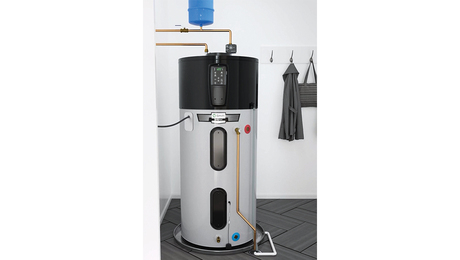*
Need help in repairing cracked plaster on archway. Would prefer to keep this a small project and not get into replacing structural members. What screening material, repair material (durobond, spackling compound) would give me the best shot at a decent repair. Pleas detail materials and sequence.
Thanks, Mike















Replies
*
Mike- I work on a 1927 5 story office bldg. and have been doing a ton of plaster repair since an earthquake here in Feb. 2001. Do you have just cracks, or are there chunks or sections you need to replace? I need to get some work done at the moment, but post some more details and I'll try and give you a hand when I can. - Ken
*Hi, Mike: It depends on the size of the cracks. Are you talking about huge voids in the plaster where you can see the lath as it is exposed? Is it wood lath or wire dimond mesh? How old is the structure? Are the cracks running along sructural lines or just random? Do you care about matching the origianl finish or are you just for a "patch" job. Do you know the reason for the cracks. House setteling, earthquake damage, water damage etc. Please elaborate. Thanks.
*Ken,The skim coat of the horizontal face of an arch has peeled off, possibly due to an upstairs leak. Arch appears sound, however no lathe just a rough coat material (plaster, concrete?) with rusted 2" corner bead underneath.Thanks Mike
*Mike- Make sure you get that leak fixed or your work will be for naught! Anyway, make sure you remove loose material first. Next, you should use a bonding agent on the areas you will be filling in- either concrete bonding agent sold as such, or even carpenters yellow glue slightly diluted. Brush that stuff on and let it dry. I'm assuming your corner bead is ok. For the mud I suggest using 90-minute setting compound (drywall mud that sets up chemically rather than by drying). The setting compound should have 24 hrs. to dry out completely, at which point you can do any necessary sanding. Top off with more mud if it needs it and let it dry. You may find it necessary to top coat with regular drywall mud to get a smooth surface. Use all purpose or better yet 'lite topping' and sand lightly when completely dry. You didn't mention texture, so I'm assuming it's smooth. Next you'll want to prime with oil- based, Kilz is the best, rolled on. Then paint as desired. The primer is esp. important to keep rusty metal from bleeding through. This is about as simple as I can suggest since you said you didn't want to get into a big deal. Let us know how it goes. -Ken